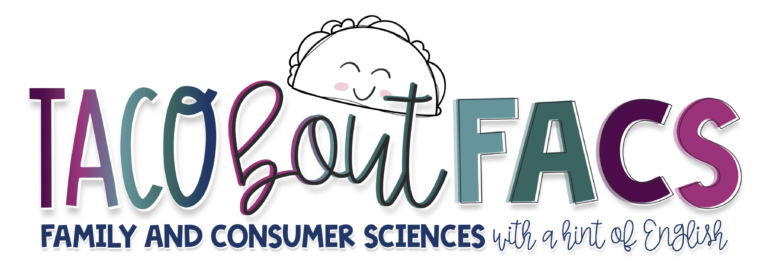I can feel the eye twitch now, but I can also know I can fix it.
The start of the semester is always a strong reminder why it is worth every minute of time teaching students valuable skills for communication and leadership.
But the second and third weeks of the semester are always spent helping students learn about communication skills, problem-solving, leadership, interpersonal skills, and job readiness.
Taking time to build these life skills not only helps the individual student, but also helps to build a classroom culture.
Email etiquette
Of course, students can read about life skills and how to do things, but these are skills that need actual practice to see improvements.
For example, email etiquette. For some, this is a first round draft. I’m fully confident they learned the friendly letter format in the elementary years- I taught those skills, but it casually fades away over time.

We practice, revise real examples, and students are assigned a practice email to a former teacher. Teachers love to receive the email and I love to see who they chose and read their memory of the class. Students CC or BCC me on the email to receive points.
I tell students I am not paid well enough to play detective for late and missing work, which is why I expect students to email when they submit missing assignments.
The email needs to be in the friendly letter format and needs to include the assignment name. Numerous students with multiple missing assignments means “I turned in my missing assignment” could mean 27 different assignments.
This practice is essential for students to gain important life skills practice.
Hexagonal thinking
Getting students to share with one another isn’t always the easiest. However, hexagonal thinking somehow breaks that barrier for even the shyest of students.
The best part of hexagonal thinking? There are no right or wrong answers IF you justify your thinking.
There are two I like to use since these two weeks are focused on communication and leadership skills- Communication Skills Hexagonal Thinking and Student Behavior Traits Hexagonal Thinking.
Since both of these focus on communication and common behavior traits you see among students, it actually starts to bring out strong conversations.
Hexagonal thinking is one of those activities that works perfectly for a classroom observation and is completely relatable when talking about life skills.
Another part of hexagonal thinking is writing a reflection about the final decisions. This is great practice for writing in complete sentences and supporting core class expectations.
Social situations
Back to school time is one of the best times to talk through problem-solving situations.

The Social Situations Discussion Cards are one of those activities that you can bring in 2-3 cards per day. It doesn’t take long and it allows students to think about communication skills.
Junior high, especially, can be one of those times you need a reminder to check yourself before you wreck yourself. Or that being mean doesn’t make you pretty. These cards are a great way to discuss more appropriate responses to various real-world scenarios.
Interpersonal skills
Another favorite is helping students find their strengths and to build on them. Interpersonal skills are something we focus on for two weeks and then refer back to all semester.
Helping students build on communication skills and job readiness is one of my favorites. This ties in so nicely with our cooking unit later in the semester, but when you start talking about jobs (and making money), those little ears start perking up.


The activities gives students a chance to discuss which candidate is the best choice for a local pizza place, interview red flags, after interview thank you card writing, a cross word puzzles, and an escape room.
Strengthen communication and leadership
These activities easily fill two weeks of lesson plans. They all work well together, which makes it easy to swap and mix as needed to build students’ social skills.
By the end of the second week for this unit, or the third week of the semester, students begin to feel more comfortable sharing with others, proper emailing etiquette, and speaking aloud.
Without hesitation, these activities are my go-to when asked how I start the semester. Each one of these activities nicely supports so many of the family, career, community connection standards, but also supports the other classes within the building. That’s a win in my book!
If your students could also use the support and practice, you can find the bundle here.


